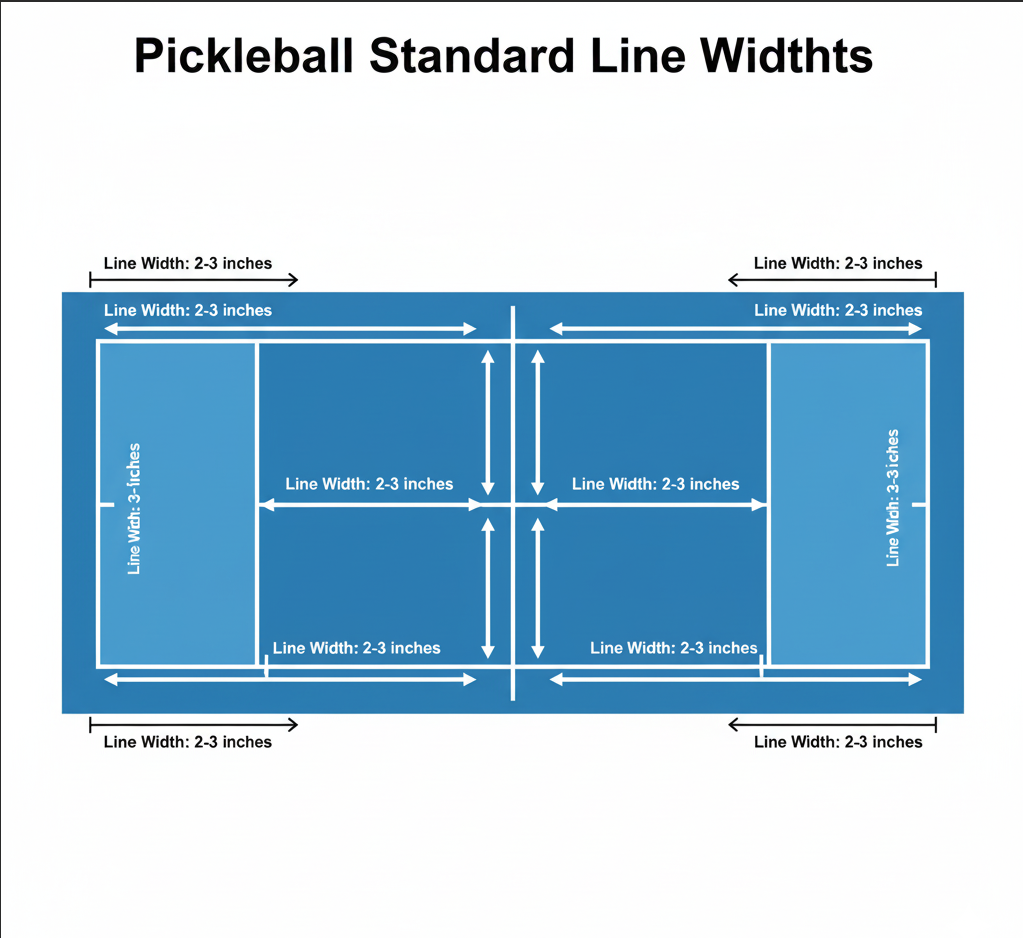Pickleball Court Standard Line Width
Pickleball Court Standard Line Width: Precisely Delineating the Boundaries of the Game
In the world of pickleball, standard line widths may seem subtle, but they play a crucial role. Like meticulous referees, they clearly and accurately define the playing area, laying the foundation for a fair and orderly pickleball match, and creating a vibrant and exciting sports landscape.
1. Sidelines: Defining the Boundaries of the Playing Area
The sidelines of a pickleball court are crucial demarcations of the entire playing area. Whether it's the approximately 20-foot-wide sidelines of a doubles court or the adjusted sidelines of a singles court, they all adhere to a strict standard width. Typically, the width of the sidelines is just right, typically around 2-3 inches. These seemingly narrow lines possess a powerful "magic." They clearly demarcate the inside and outside of the court, clearly signaling to players: This is the stage for your unleashing your passion; crossing this line is outside the rules of the game.
The width of these lines is carefully considered. Overly wide sidelines can be visually distracting, hindering players' judgment of ball placement; overly narrow lines can be difficult to discern over extended use or from unusual viewing angles, leading to contention. A line width of 2-3 inches ensures clear visibility without causing unnecessary distractions. When players are sprinting and hitting the ball, a glance at the line in their peripheral vision allows them to instantly identify their position and range, much like a race car driver using the boundary lines to maintain a correct course on the track.
2. Baseline: The Backline of Defense Where Strength and Skill Intertwine
The baseline also plays an irreplaceable role on a pickleball court. Its standard width, similar to the sidelines, is 2-3 inches. For doubles or singles courts, which are approximately 44 feet long, the baseline serves as a crucial defensive line and starting point for players' offense. Players often engage in intense competition near the baseline, delivering powerful serves or precise returns.
The width of the baseline ensures its clear visibility in all circumstances. When preparing to serve at the baseline, players use this line to determine their stance and the legality of their serve. During the return, knowing the baseline's location helps players better control the depth and power of their shots, preventing them from going out of bounds. Every shot near the baseline is a combination of power and technique, and the baseline acts as a silent guide, guiding players to perform within the rules.
3. The Service Area Line: A Key Guide to Activating Strategy
The service area line is a unique and crucial feature of pickleball courts. It surrounds the serving area, defining a crucial area that determines the strategy at the start of the match. The width of the service area line is also precisely standardized, and its clear lines indicate the legal area for serving.
In doubles matches, the service area is defined by the service area line, which is used by both players, who take turns serving. Its width ensures that players are within the designated area at the moment of serving, preventing illegal serves. In singles matches, the service area line serves as a basis for players to develop their individual serving strategies. The service area line is like an intriguing puzzle before the game begins. Players must consider the optimal serve within the defined area to penetrate their opponent's defense and gain the upper hand.
IV. Center Line: The Axis of Symmetry and Tactical Divider
The center line of a pickleball court bisects the court, and its width is within standard limits. The center line not only serves as the axis of symmetry but also holds crucial tactical significance in doubles play. It acts as an invisible dividing line, influencing the positioning and strategic planning of the players on both sides of the center line.
In doubles play, players must constantly monitor the center line, adjusting their defensive and offensive strategies based on the ball's position on either side. The center line's width allows players to quickly determine whether the ball has crossed the center line, allowing them to make informed decisions in the fast-paced and tense atmosphere of play. For example, when the ball approaches the center line, the defender must consider whether the player near the center line should receive the ball or coordinate with a teammate. The attacker, on the other hand, must consider how to utilize the area near the center line to manipulate the opponent and create scoring opportunities. These pickleball courts, with their standard dimensions and widths, work together to create a complete and precise playing space. They are a visual embodiment of the rules of pickleball, silently safeguarding the fairness and standardization of the game. Each line carries the dreams and efforts of the players, bearing witness to the excitement and charm of pickleball, making every game an unforgettable and exciting feast.

BHI Pickleball-Custom pickleball paddle






